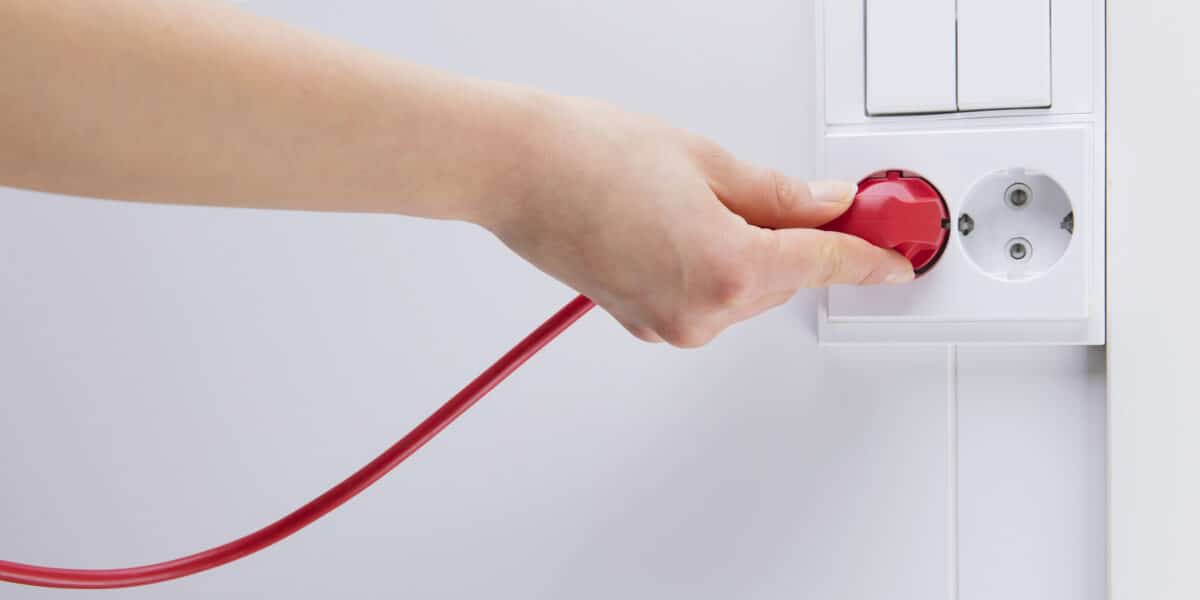In Finland, the adequacy of electricity depends on many factors, such as how electricity can be produced in Finland with wind power, hydro power, nuclear power, and combined heat and power (CHP).
The production capacity is strongly correlated with the weather: is there enough rain to fill the reservoirs at hydro power plants? Is it windy enough to generate wind power? The weather also affects consumption, which rises as the temperature falls below zero and more heating is needed.
During the moments of peak electricity consumption – generally in the mornings and early evenings – Finland’s domestic production is nowhere near enough to cover demand. The functionality of the cross-border connections becomes a critical link in the chain, supplying Finland with electricity from Norway, Sweden and Estonia.
The cross-border connections are reliable, but unexpected reactions can occur in the electricity grid. Furthermore, we cannot say for sure whether our neighbouring countries will always have enough electricity to transmit to Finland.
If companies and individuals make sensible choices about how they use electricity, it will improve the adequacy of electricity. Demand-side management shifts the consumption of electricity from consumption peaks to other times, and it can be instrumental in preventing electricity shortages.
However, if electricity consumption exceeds the supply of electricity, an electricity shortage arises, and sections of the grid will be disconnected in turn for two hours.
Fingrid, the authorities, the electricity distribution companies, and other parties have clear operating models and responsibilities in such a situation so as to ensure a swift return to normal.

Fingrid: Operational control
Fingrid is responsible for communicating the various phases of an electricity shortage on its website, as well as directly to parties such as ministries and network operators so that they are prepared for it.
In the event of an electricity shortage, Fingrid will notify the distribution system operators of the amount of power to be disconnected and the timing of the disconnection. Local distribution system operators will disconnect consumption facilities, and the power cuts will last from one to two hours in each affected area.
Fingrid has a three-step electricity shortage scale for reporting on the criticality of the incident. When this article was written in mid-October 2022, Finland was not on the scale at all. In other words, it was
nowhere near experiencing an electricity shortage.
Three-step electricity shortage scale
1. ELECTRICITY SHORTAGE POSSIBLE
Forecasts indicate that domestic production and imports will not be enough to cover electricity consumption in the near future.
2. HIGH RISK OF ELECTRICITY SHORTAGE
All the electricity production available in Finland is in use, and no more electricity can be obtained from Finland’s neighbouring countries. Fingrid will have already started up the reserve power plants. It would not be possible to compensate for the shortfall caused by the largest possible fault.
3. ELECTRICITY SHORTAGE
Electricity production and imports are not enough to cover consumption, and Fingrid needs to exercise its right as the party responsible for the system to disconnect electricity consumers in cooperation with the distribution system operators.
Ministry of Economic Affairs and Employment: Responsible of communication
Ministry of Economic Affairs and Employment is responsible for communication.
“If Fingrid announces that an electricity shortage is possible, we publish a press release to communicate the situation to everyone in Finland,” says Tatu Pahkala, Senior Officer at the Ministry of Economic Affairs and Employment.
The same press release is also published on the ministry’s website. The press release highlights the need to save electricity during the mornings and afternoons.
The ministry works with Fingrid, the Energy Authority and the National Emergency Supply Agency to keep its situational awareness of the adequacy of electricity up to date at all times. If an electricity shortage occurs suddenly – due to a fault, for example – it may be necessary to release information quickly.
“Our press release states the estimated duration of the electricity shortage and provides instructions on how to prepare for it and save electricity,” Pahkala says.
Energy Authority: Balance between supply and demand
The Energy Authority is responsible for monitoring the relationship between the electricity supply and demand in Finland and publishing a security of supply report in accordance with the Electricity Market Act in cooperation with other authorities.
The National Emergency Supply Agency: Sufficient reserves
The National Emergency Supply Agency monitors fuel availability and reserve levels and reports if a severe electricity shortage lasts for a long time.
If the natural gas supply is disrupted, the National Emergency Supply Agency’s main duty is to ensure a supply of reserve fuel.
Motiva: Savings tips for citizens
Motiva´s website provides the latest bulletins and lists of useful tips for saving electricity. Motiva’s Down a Degree campaign will run throughout the heating season, encouraging everyone in Finland to make minor everyday changes to save energy.
Reduce the temperature by one degree in the rooms where you spend time and by more than one degree in storage rooms.
- Reduce the temperature by one degree in the rooms where you spend time and by more than one degree in storage rooms.
- Take shorter showers and avoid running the water unless you need to.
- Use the sauna in an energy-efficient way: get in there quickly, do not take long breaks between turns in the sauna, and use a moderate heat.
- Turn off equipment when you are not using it, and unplug chargers when you have finished charging.
Electricity suppliers: Suppliers are not responsible for communication
Electricity suppliers are not expected to issue any special communications, but they can notify their customers of an electricity shortage according to their needs. Suppliers should follow the instructions from distribution system operators when they respond to customer enquiries.
Distribution System Operator :Informing consumers of power cuts
In the event of an electricity shortage, distribution system operators disconnect the power – in other words, they oversee managed power cuts – according to Fingrid’s instructions.
When a distribution system operator receives notice from Fingrid of an electricity shortage, the operator sends text messages and emails to the customers who will be affected by the power cut.
“The message will probably be sent an hour or more before the electricity shortage when it becomes likely that a power cut will be necessary. We will also announce the situation in the news sections of our websites, press releases and information banners on the electricity outage map. Naturally, our customer service team will also provide information,” says Heikki Paananen, Head of Operations at Elenia, a distribution system operator.
“All our communications will refer to the press releases from the Ministry of Economic Affairs and Employment and Fingrid. We will ask customers to save electricity and prepare themselves for power cuts. Our free disturbance messaging service notifies the customers affected by outages due to an electricity
shortage,” Paananen says.
He advises anyone who has not yet subscribed to their network operator’s disturbance messaging service to do so now.
If the need for power cuts arises so suddenly that the distribution system operator does not have time to send a warning message, the customers subscribing to the disturbance messaging service will be notified of the electricity shortage just after the power cut begins.
“Unfortunately, we cannot announce the areas that might be affected by electricity shortages days or months in advance because the switching status of our electricity grid can change, and the size of the load that must be disconnected or the duration of the incident are not known in advance,” Paananen says.
In any event, the potential for an electricity shortage will be so widely publicised in the national media that customers will be informed to check their network operator’s website or the electricity outage map for further information. If a power cut has already begun, the reason will be announced on the network
operator’s online electricity outage map.






